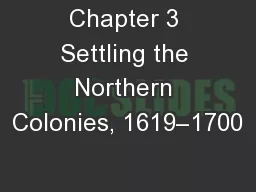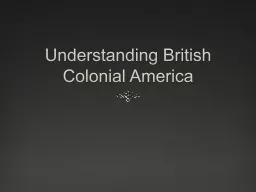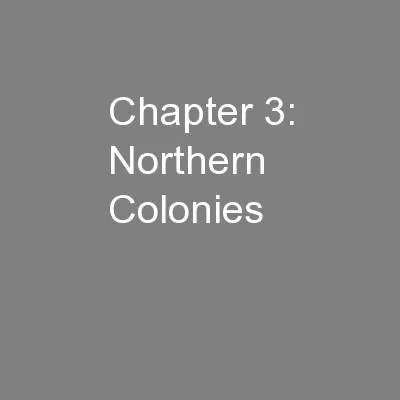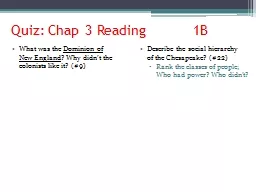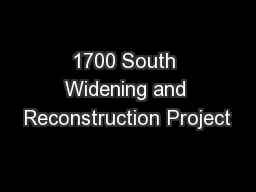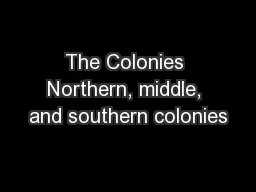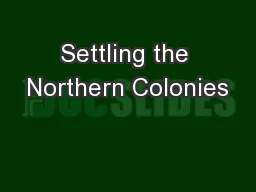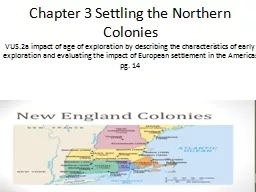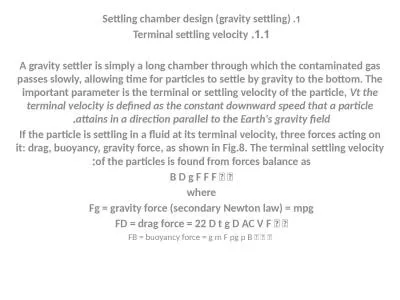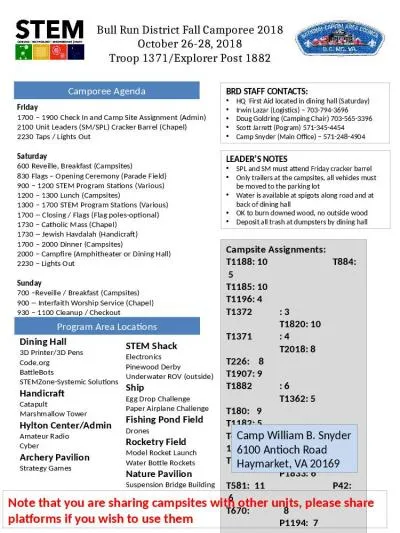PPT-Chapter 3 Settling the Northern Colonies, 1619–1700
Author : faustina-dinatale | Published Date : 2018-11-10
Historical Thinking Skills 2 What caused the cultural clashes between English colonists and American Indians in the 17 th century How did the development of the
Presentation Embed Code
Download Presentation
Download Presentation The PPT/PDF document "Chapter 3 Settling the Northern Colonies..." is the property of its rightful owner. Permission is granted to download and print the materials on this website for personal, non-commercial use only, and to display it on your personal computer provided you do not modify the materials and that you retain all copyright notices contained in the materials. By downloading content from our website, you accept the terms of this agreement.
Chapter 3 Settling the Northern Colonies, 1619–1700: Transcript
Download Rules Of Document
"Chapter 3 Settling the Northern Colonies, 1619–1700"The content belongs to its owner. You may download and print it for personal use, without modification, and keep all copyright notices. By downloading, you agree to these terms.
Related Documents

